
Hypena is a genus of moths in the family Erebidae. It was first described by Franz von Paula Schrank in 1802. These non-migratory moths overwinter as pupae and almost never come to bait as adults.

Asura is a genus of moths in the subfamily Arctiinae erected by Francis Walker in 1854.

Ceryx is a genus of moths in the family Erebidae. It was described by Hans Daniel Johan Wallengren in 1863.
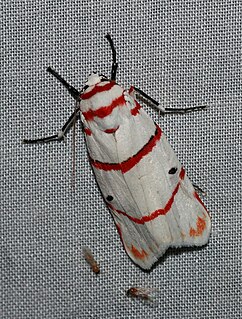
Cyana is a genus of moths in the family Erebidae. Species are well distributed in Africa, Madagascar, China, India, Sri Lanka, Myanmar, Sumatra, Java and Borneo. The genus was erected by Francis Walker in 1854.

Miltochrista is a genus of moths of the family Erebidae, subfamily Arctiinae. The genus was erected by Jacob Hübner in 1819.
Paraspilarctia is a genus of moths in the family Erebidae. It occurs in China, Taiwan, and northern Vietnam.
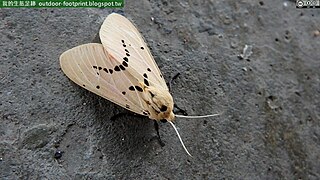
Spilarctia is a genus of moths in the family Erebidae. The genus was erected by Arthur Gardiner Butler in 1875.

Spilosoma is a genus of moths in the family Erebidae originally described by John Curtis in 1825. A very heterogeneous group, it is in need of review by the scientific community, as certain species probably need reclassification into their own genera.

Corgatha is a genus of moths of the family Erebidae erected by Francis Walker in 1859.

Deltote is a genus of moths of the family Noctuidae. The genus was described by Reichenbach in 1817.

Enispa is a genus of moths of the family Erebidae. The genus was erected by Francis Walker in 1866.
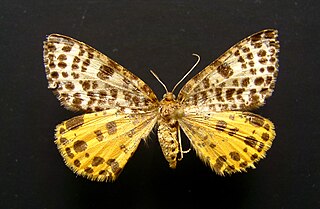
Arichanna is a genus of moths in the family Geometridae.

Heterolocha is a genus of moths in the family Geometridae described by Julius Lederer in 1853.

Hydrelia is a genus of moths in the family Geometridae erected by Jacob Hübner in 1825.

Ourapteryx is a genus of moths in the family Geometridae. The genus was erected by William Elford Leach in 1814.

Eilema pulverea is a moth of the subfamily Arctiinae first described by Alfred Ernest Wileman in 1910. It is found in Taiwan.

Lymantria umbrifera is a moth in the subfamily Lymantriinae first described by Wileman in 1910. It is found in Taiwan and China.
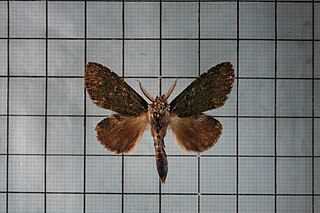
Syntypistis viridipicta is a species of moth of the family Notodontidae first described by Wileman in 1910. It is found in northern India, Sundaland, China, Taiwan, Myanmar, Thailand, Vietnam, Nepal, Laos and Cambodia.
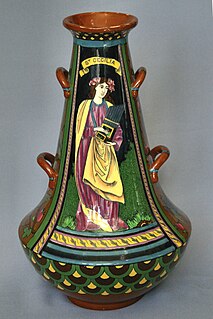
Shelley Potteries, situated in Staffordshire, was earlier known as Wileman & Co. which had also traded as The Foley Potteries. The first Shelley to join the company was Joseph Ball Shelley in 1862 and in 1896 his son Percy Shelley became the sole proprietor, after which it remained a Shelley family business until 1966 when it was taken over by Allied English Potteries. Its china and earthenware products were many and varied although the major output was table ware. In the late Victorian period the Art Nouveau style pottery and Intarsio ranges designed by art director Frederick Alfred Rhead were extremely popular but Shelley is probably best known for its fine bone china “Art Deco” ware of the inter-war years and post-war fashionable tea ware.

















